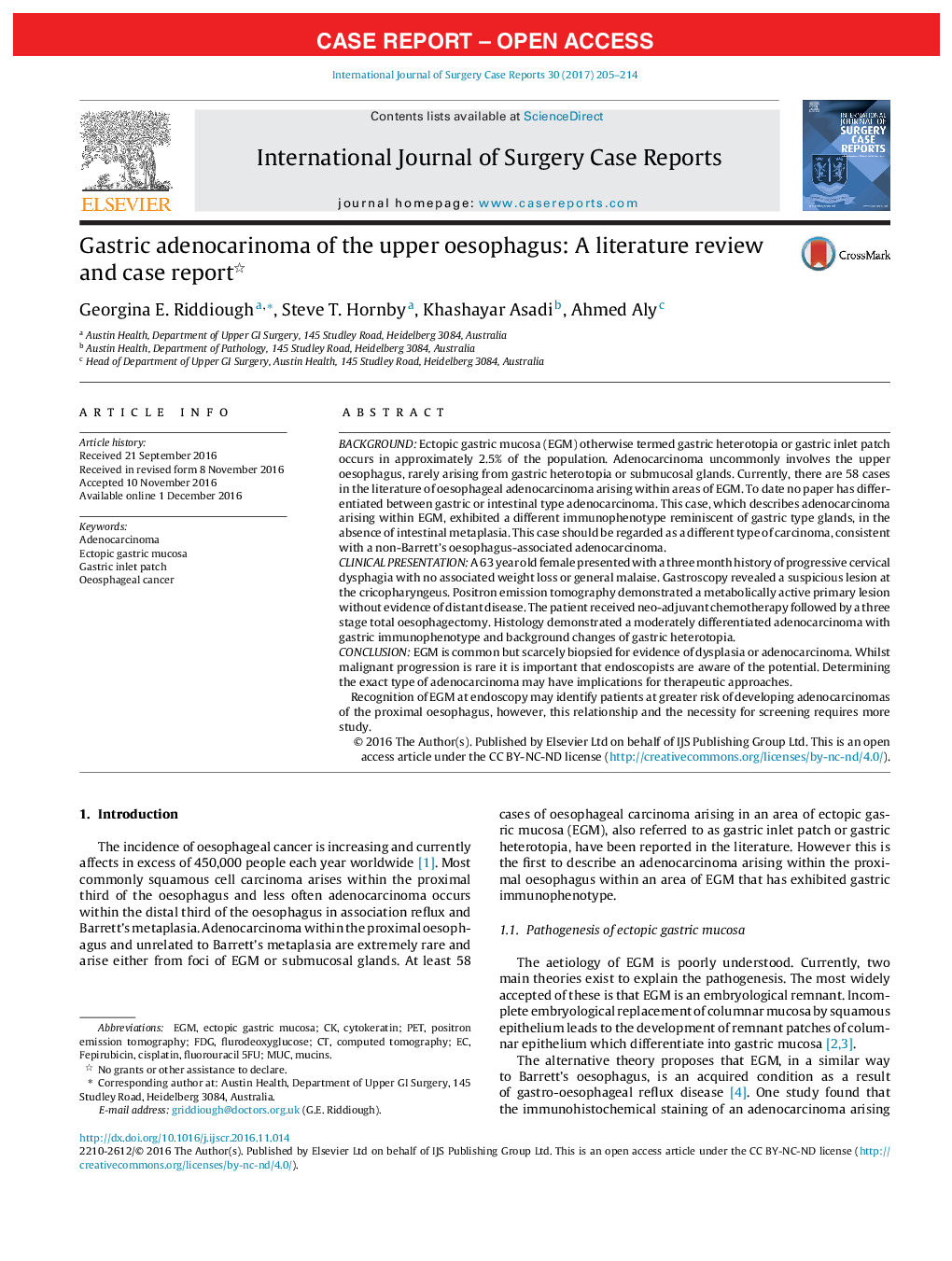| کد مقاله | کد نشریه | سال انتشار | مقاله انگلیسی | نسخه تمام متن |
|---|---|---|---|---|
| 5732614 | 1612084 | 2017 | 10 صفحه PDF | دانلود رایگان |
- Upper oesophageal adenocarcinomas are rare, and can occur in the setting of ectopic gastric mucosa (EGM).
- Adenocarcinomas arising within EGM have been treated successfully via a wide range of approaches (including endomucosal resection and open surgical resection) depending upon their clinical staging.
- The patient in our case report was successfully treated with no detectable disease recurrence at 18months follow up with neoadjuvant chemotherapy and surgical resection.
BackgroundEctopic gastric mucosa (EGM) otherwise termed gastric heterotopia or gastric inlet patch occurs in approximately 2.5% of the population. Adenocarcinoma uncommonly involves the upper oesophagus, rarely arising from gastric heterotopia or submucosal glands. Currently, there are 58 cases in the literature of oesophageal adenocarcinoma arising within areas of EGM. To date no paper has differentiated between gastric or intestinal type adenocarcinoma. This case, which describes adenocarcinoma arising within EGM, exhibited a different immunophenotype reminiscent of gastric type glands, in the absence of intestinal metaplasia. This case should be regarded as a different type of carcinoma, consistent with a non-Barrett's oesophagus-associated adenocarcinoma.Clinical presentationA 63Â year old female presented with a three month history of progressive cervical dysphagia with no associated weight loss or general malaise. Gastroscopy revealed a suspicious lesion at the cricopharyngeus. Positron emission tomography demonstrated a metabolically active primary lesion without evidence of distant disease. The patient received neo-adjuvant chemotherapy followed by a three stage total oesophagectomy. Histology demonstrated a moderately differentiated adenocarcinoma with gastric immunophenotype and background changes of gastric heterotopia.ConclusionEGM is common but scarcely biopsied for evidence of dysplasia or adenocarcinoma. Whilst malignant progression is rare it is important that endoscopists are aware of the potential. Determining the exact type of adenocarcinoma may have implications for therapeutic approaches.Recognition of EGM at endoscopy may identify patients at greater risk of developing adenocarcinomas of the proximal oesophagus, however, this relationship and the necessity for screening requires more study.
Journal: International Journal of Surgery Case Reports - Volume 30, 2017, Pages 205-214
